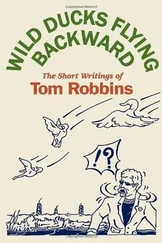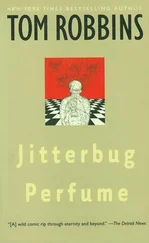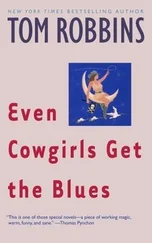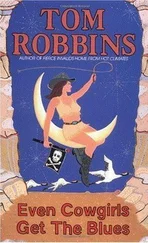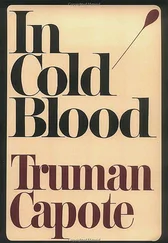The year was 1991, the venue was the Neptune Theater in Seattle’s University District. The film was The Fisher King, starring Robin Williams. Based loosely on the Percival story from the Arthurian legends, Williams plays Parry, a man broken financially, physically, and mentally. Homeless, Parry has been given shelter in the basement of a New York tenement building; and in that dusty, low-ceilinged space, zigzagged with furnace ducts, electrical wiring, and water pipes, he has set up an altar, a small shrine.
Neatly arranged in the shrine are such religious paraphernalia as incense and incense burners, prayer beads, votive candles, and representations of Asian deities, including the Buddha. It’s all quite tidy and earnestly, if naively, reverential; but if alert, one notices among the holy relics two little plastic packets of soy sauce, the sort typically included in your take-out order from a Chinese restaurant. Nothing is made of this in the movie, it’s just a fleeting image; maybe a throwaway sight gag, maybe an offhanded clue to Parry’s mental state. For me, however, it was an unbidden, instantaneous round-trip ticket to satori.
It probably can’t be explained to either the reader’s satisfaction or my own, but let me suggest that the juxtaposition of the nobly devotional and the petty functional, of the high-minded and the banal, served to attract the flash of ultimate cognition the way a metal rod set atop a barn can attract lightning. Of course, for a strike to occur, conditions in both cases must be favorable.
The glue that holds the natural world together appears to be a harmonious balance of opposites: day and night, light and dark, winter and summer, liquid and solid, acidic and alkaline, male and female, wave and trough, proton and electron, etc. There prevails in our reality an explicit duality that represents an implicit unity (the “oneness” about which I’ve previously babbled), and the line of separation between those things just named is as thin as it is necessary: yang rubs up against yin, yin against yang, distinct but mutually supportive.
The line separating tragedy from comedy is broader, deeper, more jagged, although neither as fixed nor as problematic as the one between life and death; and it’s those more glaring oppositions, including desire versus rejection, success versus failure, and especially, “good” versus “evil” that generally engage practitioners of the narrative arts. From my perspective, however, the most fascinating and perhaps most significant of all interfaces is the one that separates yet connects the ridiculous and the sublime. The surprisingly narrow borderline between things holy and things profane, between prayer and laughter, between a Leonardo chalice and Warhol soup can, between the Clear Light and the joke, provides a zone of meaning as exhilarating as it is heretical: a whisper of psychic release so acutely yet weirdly portentous it just might offer a clue to the mystery of being. Or at least help one understand what ol’ Nietzsche was getting at in Jenseits von Gut und Böse.
I hasten to emphasize that no thoughts of that sort occurred to me at the time. Not one. I simply glimpsed the stupid little packs of inferior soy sauce sitting at the divine feet of the Buddha and suddenly felt giddy, felt in instant total harmony with that Indian swami who defined life as “the beautiful joke that is always happening.” The roof had been blown off of the cellblock of consensual reality and I was escaping, climbing toward the stars, trailing tatters of abandoned orthodoxy, surfing a tide of higher wisdom that is forever off-limits to the sober and the prudent. Figuratively speaking, obviously: I hadn’t spilled a drop of my Pepsi.
14. washington, lee & wolfe
Since 1985, Washington and Lee University, a private liberal arts college in Lexington, Virginia, has been coeducational, but when I studied there in the 1950s, the only breasts on campus belonged to the law school’s hot librarian (thanks to whom that library was filled to capacity every evening) and a couple of carbo-enhanced mammoths who played offensive line for the football team. W&L had been exclusively male since its founding in 1749, and its male students have themselves been rather exclusive since the academically rigorous school was and remains highly selective: only 15 percent of applicants were admitted for the year 2012–2013.
Some considered W&L, known as “the Princeton of the South,” a sort of finishing school for Southern gentlemen, a notion reinforced by the college’s famous honor system, still in effect, and its strict insistence on conventional dress, a rule only recently modified in deference to the widespread contemporary predilection for informality. “Conventional dress” meant that we students were required to wear coat and tie at all times, on campus and off, except when participating in sports — which may account for the fact that I spent such an inordinate amount of my time playing basketball.
Since the majority of W&L students were from affluent families, many of those suits and coats were well made and handsome. One student, however, stood out among all others in terms of sartorial splendor. It wasn’t that his threads were more expensive, more finely tailored than those of fellow classmen, but that they were chosen — and worn — with such panache, such dash. This dandy, who on warm days appeared in dazzling white suits with flowery pocket squares, was, among other things (he epitomized the “big man on campus”), sports editor of the semiweekly school newspaper, for which I, a freshman, was a cub sports reporter.
The paper was called the Ring-tum Phi (why, I never learned: W&L men were inclined that way), although it was referred to informally as “the Ring Dang Doo,” a slang term for “penis” (they were inclined that way as well); and the sports editor, my boss, was T. K. Wolfe III. In less than two decades, he would be known to the English-speaking world as Tom Wolfe, one of the most innovative journalists in the history of the craft, a flamboyant but sharp-eyed stylist who, along with Hunter S. Thompson, blasted open the long-standing wall between reporter and subject, creating on the page an intimacy and immediacy that put culture and counterculture in bold relief, filling semi-anthropological magazine articles with the rococo popcorn of amplified observation.
Tom Wolfe has also enjoyed a measure of success as a novelist, although his fiction suffers from the very characteristics that made his sixties and seventies journalism so vital: his flawless ear for jargon and meticulous eye for detail. His approach to fiction, he has admitted, is that of the nineteenth-century novelists, which implies a verbatim translation of life, but as W. Somerset Maugham once put it, “Realism too often produces novels that are drab and dull,” going on to assert that the fiction that really matters is make-believe, dealing not in truths per se but in effects. Wolfe either doesn’t possess or chooses not to indulge the most precious and effective potion in a novelist’s pharmacopeia: imagination. Again, I digress.
I recollect seeing Wolfe at the offices of the Ring-tum Phi, sitting with his smart white shoes propped up on a desk, a flop of fine barley-colored hair drooping over his right eye, reading half aloud a long epic poem he’d just composed about the foibles of the Southern Athletic Conference. He was both elegant and eloquent, and I was suitably impressed. If he spoke to me, an awkward underling, even once during that year I don’t recall it, but thirty-three years later we did share a short but, I think, agreeable exchange.
It was at the conclusion of Esquire magazine’s gala fiftieth anniversary dinner at the Four Seasons restaurant in New York. I found myself standing behind Wolfe at the coat-check counter. It had been a splendid event (both Wolfe and I were regular contributors to Esquire ), the room luminous with luminaries, and now we were collecting our wraps. At W&L, Wolfe had been a starting pitcher on the baseball team (I told you he was a big man on campus), and later, before he became a media star, pitched for a season in the semiprofessional Sertoma League in Richmond, his hometown. I knew this because I had to monitor local baseball during my stint on the sports rewrite desk of the Richmond Times-Dispatch . Before Wolfe could retrieve his cashmere topcoat, I leaned forward and asked quietly near his ear, “What exactly was your record in the Sertoma League? Was it eight-and-five or five-and-eight?”
Читать дальше

